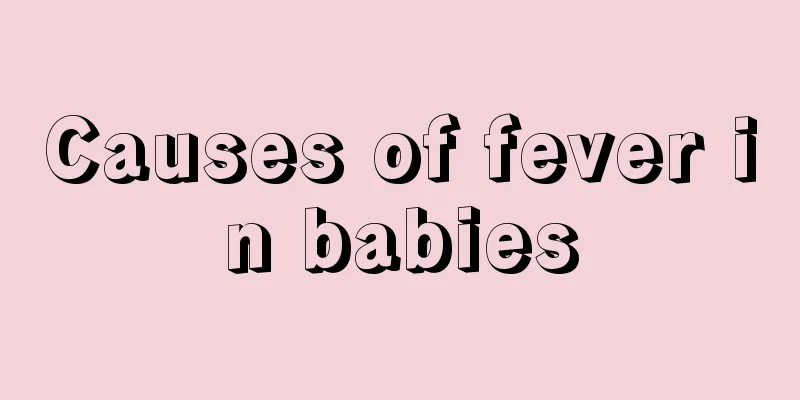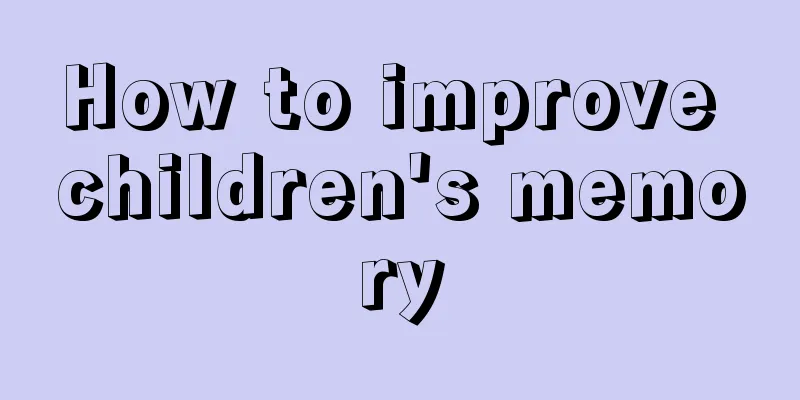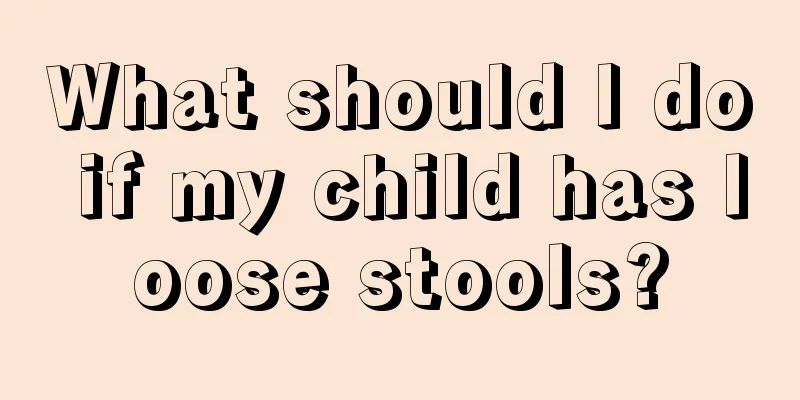Causes of fever in babies

|
Fever in babies is a very common symptom of the disease. Babies are relatively delicate. If they have a fever, parents will usually be very anxious and sometimes at a loss. However, parents must know what the baby's fever is and what the cause of the fever is so that they can help cool the baby down. Babies are very young and cannot express where they are uncomfortable or what they feel. Some babies will not show it very obviously even if they have a fever. This requires careful observation by parents to discover. There are many reasons for a baby's fever. If you see that your child is not as lively as usual, or shows abnormal behaviors such as crying and making a fuss, it is best for parents to take the baby's temperature to see if he has a fever. If the symptoms are very obvious, you need to seek medical attention in time. Do not delay the disease and prolong the baby's treatment time. The normal temperature of the human body is 36.5℃. Children's body temperature is usually slightly higher, but if it exceeds 37.5℃, we can "suspect" that the baby has a fever. Definition: A body temperature higher than the following temperatures is called a fever. Rectal temperature: 38 ℃ Oral temperature: 37.8℃ (ear temperature is the same as oral temperature) Axillary temperature: 37.5℃ Back temperature: 37.5℃ Combined symptoms: In addition to rising body temperature, children with fever may also have Poor appetite Lethargy Crying Decreased activity Drowsiness, coma Cramps, head stiffness Purple color, difficulty breathing The correct way to take body temperature: first shake the thermometer to make the mercury drop below 35 degrees. Axillary temperature: Place the thermometer under the armpit, fix the arm and do not let it move freely, and measure for four to five minutes. Oral temperature: Children should not use this method to prevent the thermometer from being bitten off. Rectal temperature: This method is recommended for neonates. Back temperature: Place the thermometer on your back and lie flat to measure for 4 to 5 minutes. If the fever is accompanied by the following conditions, seek medical attention immediately. * Fever over 38.5℃. * Poor activity *weak * Difficulty breathing * Inability to eat, severe vomiting * Cramps, head stiffness *Purple spots appear on the body *Infants under 2 months old *Children have serious illnesses *Continuous fever for more than two days What causes fever in babies? There are many causes of fever in children, which can be roughly divided into the following three categories: 1. External factors: Children's body temperature is affected by the external environment, such as wearing too many clothes when it is hot, drinking too little water, and poor ventilation in the room. 2. Internal factors: illness, cold, tracheitis, sore throat or other diseases. 3. Other factors: Such as preventive injections, including measles, cholera, diphtheria, pertussis, tetanus and other reactions. Fever is only one of the symptoms of the disease, not all of them. When it comes to fever, doctors are concerned about the impact and progression of the disease itself, but parents usually only see the appearance of the disease, such as fever, vomiting, and coughing, and become panicked. Little do people know that when doctors treat diseases, the most important thing is to discover the cause of the disease and find a way to completely cure it, rather than simply reducing the fever. So in some cases, the fever symptoms will be allowed to continue to appear in order to find the true underlying cause of the disease. Therefore, he reminded loving parents not to blindly ask doctors to reduce fever or treat fever symptoms, but to follow the doctor's advice, accurately find out the real cause of the fever and prescribe the right medicine. Everyone has a certain understanding of the reasons why babies have fever. If the baby has a fever or other symptoms, parents should not give the baby medicine casually. They need to follow the doctor's diagnosis and treatment to give the baby the medicine correctly. However, what parents need to do is to physically cool down the baby to make the baby relatively comfortable. |
<<: How to develop children's intelligence
>>: What to do if your baby has a persistent low-grade fever
Recommend
What should I do if my child gets scared and has a fever?
Children are very timid, so they are often fright...
What are the nursing measures for neonatal asphyxia?
If a newborn baby suffocates due to some reasons,...
How to treat bacterial infection and cough in children?
Children's resistance is much lower than that...
Why does my child's heel hurt?
Many children usually have heel pain. This is als...
The harm of sleeping with mother and boy
The main harm of sleeping with a boy and his moth...
Are you guilty of these 10 unforgivable bad habits as a parent?
Parents always want to raise their babies to be p...
Why is the baby's belly button bulging?
A bulging belly button in a baby is a relatively ...
What to do if a one-month-old baby has a fever of 37.7
The biggest headache for many young parents is th...
What should I do if my child has a cold stomach and vomits?
Children often eat snacks and drink too much cold...
Why is the hair thinning in a seven-month-old baby?
What mothers are most concerned about is probably...
Can children drink milk if they have diarrhea?
Everyone has drunk milk. Milk is rich in protein ...
Baby's spleen and stomach diet
If the baby's spleen and stomach are in good ...
Methods of acupuncture points massage for children with colds
Children's colds are a problem we often encou...
What foods cause precocious puberty in children?
Some cases of precocious puberty are not simply c...
Causes and treatment of ear infections in babies
Nowadays, many children will have ear inflammatio...









